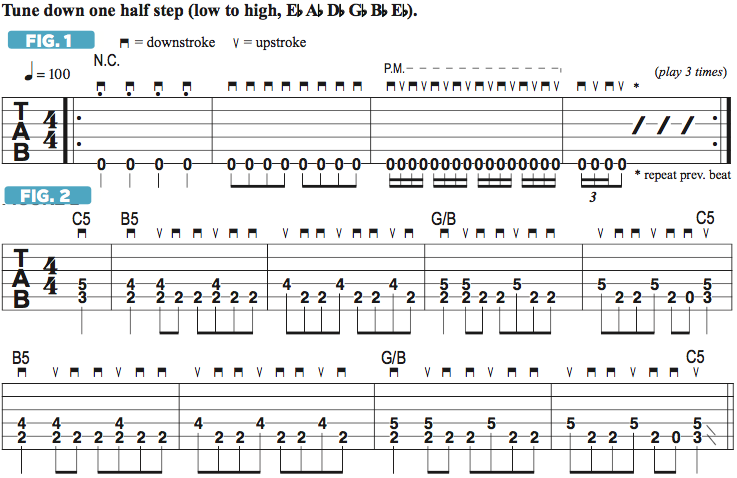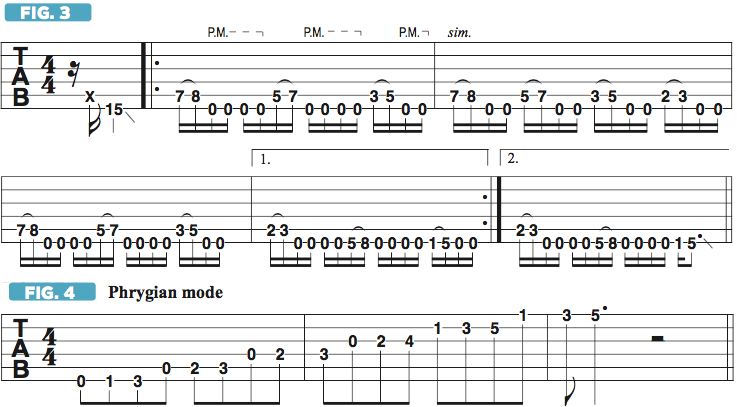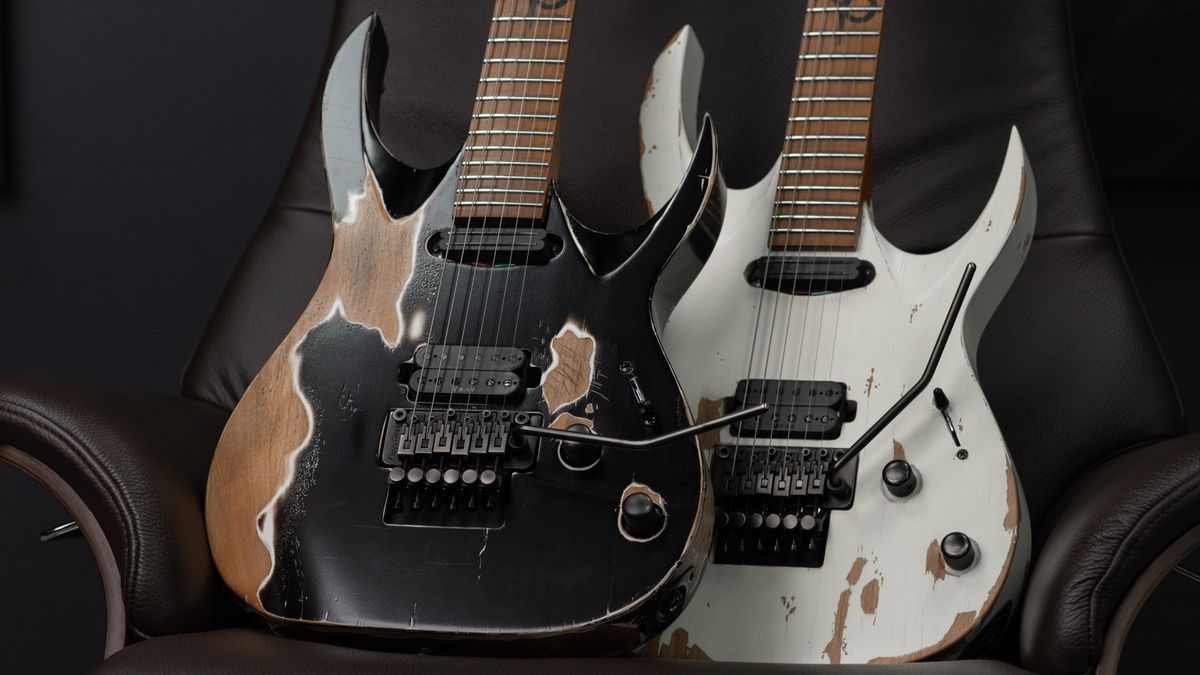Nita Strauss: how to tighten up your rhythm chops
The Alice Cooper guitarist shows you how to increase your speed by using a metronome
Even if, like me, you are far more interested in soloing than playing rhythm guitar, the truth is that strengthening one’s rhythm chops and sense of time are absolutely essential to becoming a better electric guitar player, and the best way to do that is to work with a metronome.
An exercise I regularly do to maintain solid rhythm playing technique is to repeat just one note in various rhythms against a metronome click. Set the tempo at a speed that you’re comfortable with and doesn’t feel frantic; I like 200 beats per minute. I’ll often think of the clicks as eighth notes - “ONE and TWO and THREE and FOUR and ONE and TWO and,” etc. So the tempo here is actually 100 BPM with a double-time feel.
As shown in FIGURE 1, I’ll repeatedly pick my open low E string, moving from quarter notes to eighth notes, 16th notes and 16th-note triplets, playing each of these rhythmic divisions for a single bar. I’ll use lightly palm-muted downstrokes when picking the quarter notes and eighth notes, then switch to alternate (down-up) picking for the 16th notes and 16th-note triplets, with heavier palm muting. When you get to the end of the four-bar phrase, repeat the entire figure a bunch of times.
Whenever I practice a specific guitar part, I’ll play through it five times, making sure I can perform it perfectly before increasing the tempo. I like moving it up in five-BPM increments, so in this case I’d move from 200bpm to 205, then 210, etc. Start at whatever tempo feels comfortable for you. As I tell people at my live guitar clinics, if you move to a faster tempo before you can perform the lick perfectly five times in a row, the only person you’re cheating is yourself. If you make a mistake, start again from the beginning, dial back the tempo in necessary and focus on the minute details of the lick.
Many rock and metal rhythm parts are built around low, repeating pedal tones played against shifting chord forms, as happens in one of my favorite Alice Cooper songs, “The World Needs Guts.” FIGURE 2 presents a similarly styled part, with two-note power chords sounded on the A and D strings and played in a “threes-on-fours” rhythm as the pick moves between the two strings. The picking pattern here is up-down-down for the most part, and I often start a bar with an upstroke in order to make that initial chord “pop” a little more.
The verse riff in my song “Pandemonium,” shown in FIGURE 3, features a sequence of shifting hammer-ons on the A string played against a reiterated open low E-string pedal tone. The riff is based on the E Phrygian mode (E F G A B C D), illustrated in FIGURE 4.
Working through these examples with a metronome will help you to play in lock step with any groove and at any tempo.
All the latest guitar news, interviews, lessons, reviews, deals and more, direct to your inbox!


